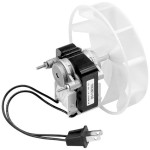How To Paint Tiles In The Bathroom
Painting bathroom tiles presents a cost-effective alternative to complete tile replacement, offering a quick and relatively simple way to refresh the look of a bathroom. While painting tiles might not be as durable as replacing them, with proper preparation, appropriate products, and meticulous application, it can provide a significant aesthetic upgrade for several years. This process requires careful planning and execution to ensure a long-lasting and visually appealing result.
Successful tile painting relies heavily on thorough preparation. Skipping steps or using incorrect materials often leads to premature chipping, peeling, or an unsatisfactory finish. Understanding the specific challenges of painting in a humid environment like a bathroom is also crucial for selecting the right products and application techniques.
Preparing the Tiles for Painting
The foundation of a successful tile painting project is meticulous surface preparation. This involves cleaning, repairing, and priming the tiles to create an ideal surface for the paint to adhere to. The following steps outline the necessary procedures.
Deep Cleaning: The initial step involves removing all traces of dirt, grime, soap scum, and mildew from the tiles. This requires a powerful cleaning solution specifically designed for bathroom surfaces. A mixture of trisodium phosphate (TSP) and water is highly effective for this purpose, but it is imperative to follow the manufacturer's safety guidelines when using TSP, including wearing gloves and eye protection. Apply the cleaning solution to the tiles using a scrub brush and vigorously scrub the entire surface, paying particular attention to grout lines, where dirt tends to accumulate. Rinse thoroughly with clean water to remove all cleaning residue.
Repairing Damage: Inspect the tiles for any cracks, chips, or loose grout. Damaged tiles require repair before any further steps are taken. Use a tile repair kit for small chips or cracks. For larger damages, consider replacing the damaged tile altogether. Scrape out any loose or crumbling grout using a grout removal tool. Once the surface is clean and dry, apply new grout according to the manufacturer's instructions. Allow the grout to cure completely before proceeding.
Sanding the Tiles: Sanding the tiles is essential for creating a rough surface that promotes paint adhesion. Use a fine-grit sandpaper (around 220-grit) to lightly sand the entire surface of the tiles. The goal is not to remove the existing finish completely but to create tiny scratches that the primer can grip onto. Focus on areas where the surface is particularly smooth or glossy. After sanding, thoroughly wipe down the tiles with a damp cloth to remove all sanding dust. A tack cloth can be used for a final cleaning to ensure no dust particles remain.
Applying Primer: Priming is a critical step in ensuring proper paint adhesion and preventing moisture damage. Use a high-quality epoxy primer specifically designed for tile surfaces. Epoxy primers provide a durable and water-resistant base for the paint. Apply the primer using a brush or roller, ensuring even coverage across the entire surface. Follow the manufacturer's instructions regarding drying time. Multiple coats of primer may be necessary, depending on the primer's coverage and the color of the existing tiles. Allow each coat to dry completely before applying the next.
Masking: Before applying primer or paint, use painter's tape to mask off any areas that should not be painted, such as fixtures, trim, or adjacent walls. Apply the tape carefully and firmly to ensure a clean and crisp line. Consider using a plastic drop cloth or newspaper to protect surrounding surfaces from paint splatters.
Choosing the Right Paint and Tools
Selecting the appropriate paint and tools is crucial for achieving a professional-looking and long-lasting finish. Not all paints are suitable for bathroom tile, and using the wrong type can lead to premature failure.
Epoxy-Based Paint: Epoxy-based paints are generally considered the best option for painting bathroom tiles due to their exceptional durability, water resistance, and adhesion properties. These paints create a hard, non-porous surface that can withstand the humid conditions of a bathroom. They are also highly resistant to scratches and stains. However, epoxy paints often require a two-part mixing process and may have a strong odor, requiring proper ventilation during application.
Acrylic-Polyurethane Paint: Acrylic-polyurethane paints offer a good balance of durability, ease of application, and lower odor compared to epoxy paints. These paints are also water-based, making them easier to clean up. Although less durable than epoxy paints, high-quality acrylic-polyurethane paints can provide a satisfactory finish for bathroom tiles, especially in areas with less direct water exposure.
Specialty Tile Paint: Some manufacturers offer specialty paints specifically designed for tile surfaces. These paints often contain additives that enhance adhesion and water resistance. Reading product reviews and consulting with paint specialists can help determine the suitability of these paints for a specific bathroom tile painting project.
Paint Rollers and Brushes: Use high-quality paint rollers and brushes designed for smooth surfaces. A foam roller with a short nap is ideal for applying paint evenly and minimizing brush strokes. Use a high-quality angled brush for painting edges, corners, and around fixtures. Cleaning brushes and rollers properly after each use will extend their lifespan and ensure a smooth finish on subsequent coats.
Paint Trays and Liners: Use paint trays with disposable liners to make cleanup easier. The liners will also prevent the paint from drying out in the tray. Choose a paint tray size that is appropriate for the size of the roller being used.
Safety Equipment: Always wear appropriate safety equipment when painting, including gloves, eye protection, and a respirator mask. This is particularly important when using epoxy-based paints, which can release harmful fumes.
Applying the Paint
The application process involves applying multiple thin coats of paint, allowing each coat to dry completely before applying the next. This technique ensures proper adhesion and a smooth, uniform finish.
Ventilation: Ensure adequate ventilation in the bathroom during the painting process. Open windows and use a fan to circulate air. This will help to remove fumes and speed up the drying process. If using epoxy-based paints, consider using a more powerful exhaust fan to remove fumes effectively.
Applying the First Coat: Pour a small amount of paint into the paint tray. Dip the roller into the paint, ensuring that the roller is evenly coated but not saturated. Apply the first coat of paint to the tiles using smooth, even strokes. Overlap each stroke slightly to avoid leaving any gaps. Work in small sections and maintain a wet edge to prevent visible lines from appearing in the finished product.
Drying Time: Allow the first coat of paint to dry completely according to the manufacturer's instructions. Drying times can vary depending on the type of paint used, the temperature, and the humidity. Do not apply the second coat until the first coat is completely dry to the touch.
Applying Subsequent Coats: After the first coat is completely dry, lightly sand the surface with fine-grit sandpaper (around 320-grit) to smooth out any imperfections. Wipe down the tiles with a damp cloth to remove any sanding dust. Apply the second coat of paint using the same technique as the first coat. Multiple coats may be necessary to achieve full coverage and a uniform color. Allow each coat to dry completely before applying the next.
Removing Painter's Tape: Carefully remove the painter's tape while the final coat of paint is still slightly wet. This will prevent the paint from chipping or peeling along the edges. Pull the tape away from the painted surface at a 45-degree angle.
Curing Time: Allow the paint to cure completely according to the manufacturer's instructions. Curing times can range from several days to several weeks. Avoid using the bathroom or exposing the painted tiles to water during the curing process. After the paint is fully cured, clean the tiles with a mild detergent and water.
Maintaining painted bathroom tiles requires regular cleaning with non-abrasive cleaners. Avoid harsh chemicals or abrasive scrub brushes, as these can damage the painted surface. Promptly address any chips or scratches to prevent moisture from penetrating the paint and causing further damage. While painted tiles offer a cost-effective and aesthetically pleasing solution, understanding the limitations and committing to proper maintenance is crucial for maximizing their lifespan.

How To Paint Tile Floor Angela Marie Made

Can You Paint Tiles Up Cycle With B Q Vaslper Review

Can You Paint Bathroom Tile Yes But It S Complicated Taskrabbit

Yes You Can Paint Your Bathtub And Tile Here S How Toolbox Divas

Can Bathroom Tiles Be Painted Victorian Plumbing

One Room Challenge How To Paint Shower Tile Updated Your Ugly Dated For 50

How To Paint A Tile Floor Steps For Success Artsy Rule

Bathroom Tile Paint Tutorial And Honest Review Jewel Marlowe

How To Refinish Outdated Tile Yes I Painted My Shower Wildfire Interiors

How To Paint Over Tile Average But Inspired
See Also







